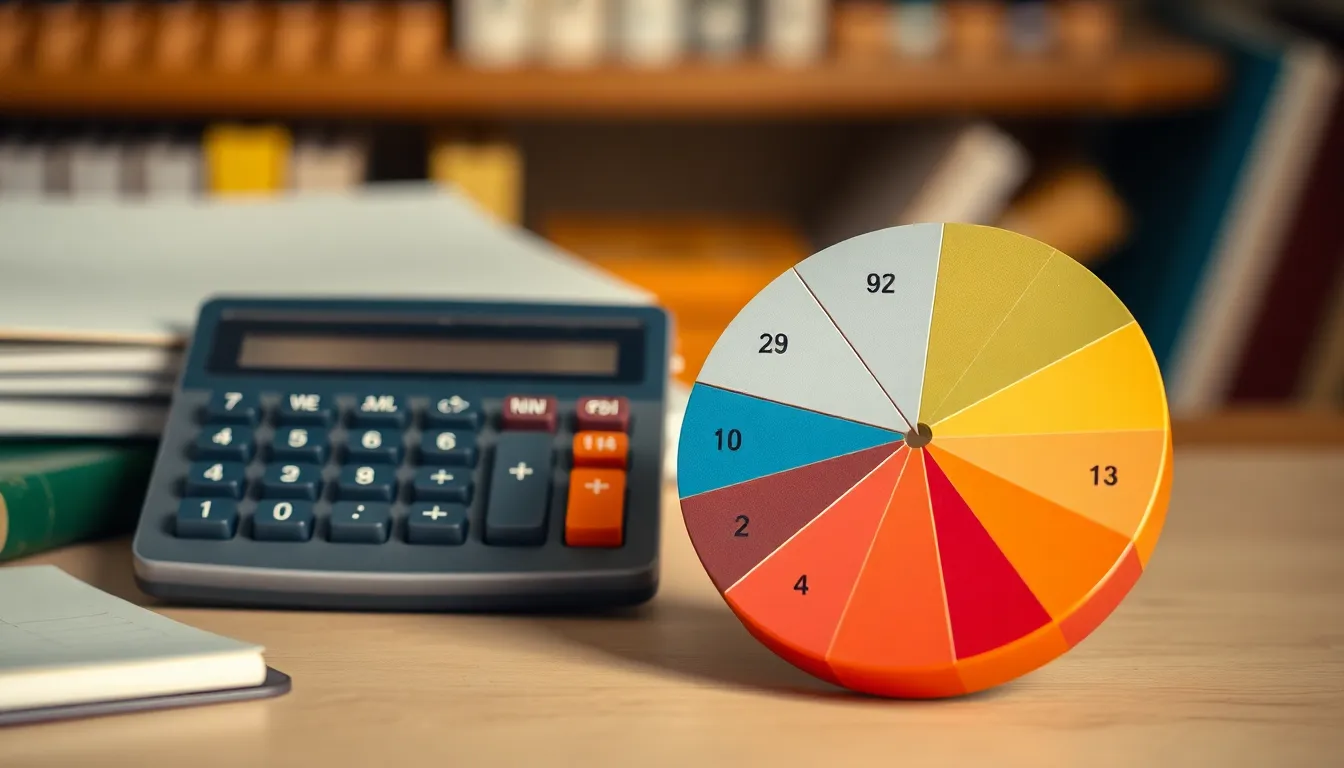Table of Contents
ToggleNumbers can be tricky, especially when they start playing hide and seek with percentages. Take 9 out of 13, for instance. At first glance, it might seem like just another math problem, but it’s a golden opportunity to impress your friends at trivia night or ace that pop quiz. Who knew math could be this much fun?
Understanding Percentages
Understanding percentages forms a foundational skill in math. To start, percentages represent a fraction out of 100. They simplify comparisons, making it easier to express proportions.
Calculating a percentage involves two key components: the part and the whole. In the case of 9 out of 13, 9 is the part, while 13 is the whole. This leads to the equation ( text{Percentage} = left( frac{text{Part}}{text{Whole}} right) times 100 ).
Inserting the values gives ( frac{9}{13} times 100 ). This multiplication converts the fraction into a percentage.
To compute ( frac{9}{13} approx 0.6923 ). Following this, multiplying by 100 results in approximately 69.23%. Thus, 9 out of 13 translates to roughly 69.23%.
Visualizing this as a pie chart can illustrate how 69.23% compares to 30.77%, representing the remaining portion. By looking at this perspective, it becomes clearer how numbers relate in everyday contexts.
Developing a solid grasp of percentages enhances financial literacy. Whether budgeting or understanding discounts, using percentages simplifies complex decisions. They also serve vital roles in fields like statistics and economics, providing insights into trends and data analysis.
Accurately calculating percentages equips individuals with tools for informed decisions. Whether in schoolwork or daily life, applying this knowledge improves problem-solving skills and enhances numerical fluency.
Calculating 9 Out Of 13

Calculating 9 out of 13 provides a clear example of how to transform a fraction into a percentage. Understanding the process involves basic arithmetic.
Step-by-Step Calculation
- Divide 9 by 13. The result, approximately 0.6923, forms the decimal representation of the fraction.
- Multiply the decimal by 100. This operation adjusts the result to a percentage, yielding about 69.23%.
- Visualize the percentage. Considering pie charts enhances understanding, showing 9 parts versus 4 parts of the remaining whole.
This method shows that working through calculations systematically clarifies numeric relationships.
Importance of Precision
Precision in percentage calculations carries significant weight. A small error can lead to inaccurate results. In academic settings, precise calculations affect grades when grading based on percentages.
In finance, precise percentages assist in budgeting and identifying savings from discounts. Miscalculations might skew financial analyses, leading to poor decisions. Thus, accuracy fosters trust in conclusions, especially when conveying information to others. For effective communication, confirming calculations with reliable methods ensures clarity and confidence in representations.
Practical Applications
Understanding percentages proves valuable in various contexts, such as education and business. Applying the calculation of 9 out of 13 as approximately 69.23% enhances interpretation and analysis.
In Education
Calculating percentages plays a significant role in academic assessments. Teachers often utilize them to gauge performance on tests. For example, if a student answers 9 out of 13 questions correctly, that translates to around 69.23%. This figure helps evaluate a student’s understanding of material. Additionally, students can use the knowledge of percentages to track progress. By analyzing scores over time, they develop better study habits and stay motivated.
In Business
Calculating percentages is crucial in the business world for data analysis. Companies frequently assess performance metrics by evaluating sales figures. A salesperson achieving 9 out of 13 targets maintains a conversion rate of approximately 69.23%. This precision aids in identifying strengths and areas needing improvement. Businesses also apply percentage calculations for discount offerings, determining profitability margins, and analyzing market trends, ultimately driving informed decisions.
Common Misconceptions
Misunderstandings frequently arise when calculating percentages. Many people might think that 9 out of 13 is 70% because it’s close to 10 out of 13. This assumption overlooks the precise calculation, leading to incorrect estimations. Rounding percentages without considering the exact value can cause considerable discrepancies. For accurate comparisons, knowing the fundamental relationship between parts and wholes is vital.
Avoiding confusion starts with grasping the calculation process. Dividing the part by the whole provides a clearer perspective on percentages. Using 9 divided by 13 illustrates how to obtain 0.6923. Multiplying this decimal by 100 reveals the accurate percentage as approximately 69.23%. Practicing with various examples helps reinforce this understanding. Regularly revisiting how to calculate percentages reduces errors and builds confidence in applying percentages confidently in different situations.
Understanding how to calculate percentages like 9 out of 13 is a valuable skill that extends beyond simple math. It empowers individuals to make informed decisions in various aspects of life. Whether in academics or business, mastering percentage calculations can enhance clarity and improve performance assessment.
By practicing these calculations, one can develop confidence and accuracy. This knowledge not only aids in everyday situations but also helps in avoiding common pitfalls associated with misestimating values. Embracing the fun side of math can transform how one approaches numbers, making it an engaging and rewarding endeavor.





